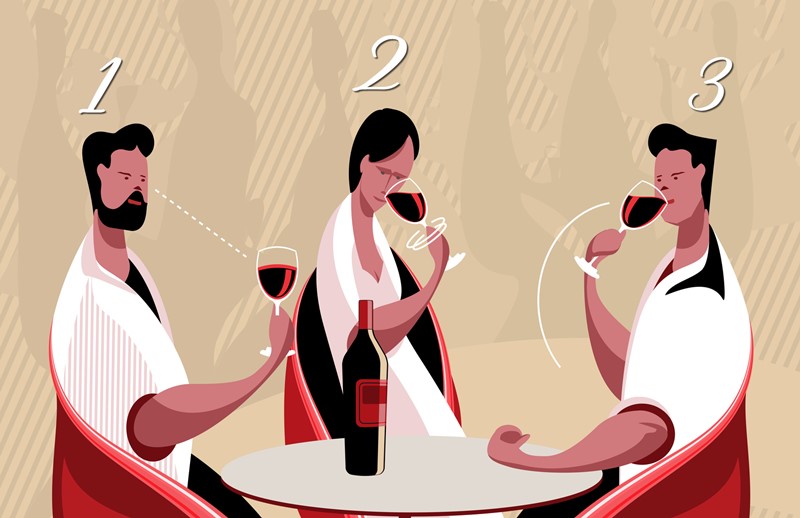
Wine tasting, an elegant and refined practice, is not just about sipping and savoring; it's a meticulous analysis that unveils the depth and complexity of a wine's character. To fully appreciate the attributes of a wine, connoisseurs and enthusiasts alike engage in a structured process that breaks down into three distinct phases: the visual phase, the olfactory phase, and the gustatory phase. Each phase is critical in its own right, contributing to a comprehensive understanding of the wine in question. This article aims to provide an insightful introduction to wine tasting, guiding novices and aficionados through this intricate journey of sensory evaluation.
1. The Visual Phase: Unveiling the Wine's Appearance
The visual examination of wine is the initial step in the tasting process. It involves scrutinizing the wine's color, brightness, clarity, and viscosity. These visual cues offer a glimpse into the wine's age, quality, and origin. For instance, the hue of red wines can range from light red to dark violet or garnet, while white wines may exhibit pale yellow, golden yellow, or even greenish tones. The clarity and brilliance of a wine are equally telling; a wine should appear clear and luminous, free from particles or sediment. Any visible particles may indicate inadequate filtration or an ongoing evolution within the bottle.
2. The Olfactory Phase: Savoring the Aroma
The olfactory phase is where one engages with the wine's aroma, a vital aspect of the tasting experience. This stage involves deeply inhaling the wine's bouquet to discern its intensity and identify various scents, such as fruit, spice, floral, wood, and others. These aromas can emerge from the grape itself (primary aromas), the fermentation process (secondary aromas), or from aging in wooden barrels (tertiary aromas or bouquet). The complexity and intensity of a wine's aroma are influenced by factors like grape variety, region of cultivation, winemaking techniques, and aging process.
3. The Gustatory Phase: Exploring the Taste
The final stage of wine tasting is the gustatory phase, focusing on the wine's flavor. Here, tasters assess the wine's sweetness, acidity, bitterness, and specific flavors, along with its texture and structure. Attributes like smoothness, astringency, and the lingering presence on the palate are scrutinized. A balanced harmony among these taste elements, coupled with appropriate intensity and a pleasant aftertaste, are sought after in this phase. The gustatory phase culminates the tasting process, allowing for a comprehensive evaluation of the wine's quality and potential food pairings.
In conclusion, wine tasting is a sophisticated process that encompasses visual, olfactory, and gustatory analyses. Each phase is critical for a complete understanding of a wine's profile, allowing enthusiasts to appreciate the nuances and craft behind each bottle. Whether a seasoned connoisseur or a curious novice, engaging in these stages of wine tasting can elevate one's appreciation and understanding of this timeless beverage.
Founded in 2007, Vinetur® is a registered trademark of VGSC S.L. with a long history in the wine industry.
VGSC, S.L. with VAT number B70255591 is a spanish company legally registered in the Commercial Register of the city of Santiago de Compostela, with registration number: Bulletin 181, Reference 356049 in Volume 13, Page 107, Section 6, Sheet 45028, Entry 2.
Email: [email protected]
Headquarters and offices located in Vilagarcia de Arousa, Spain.